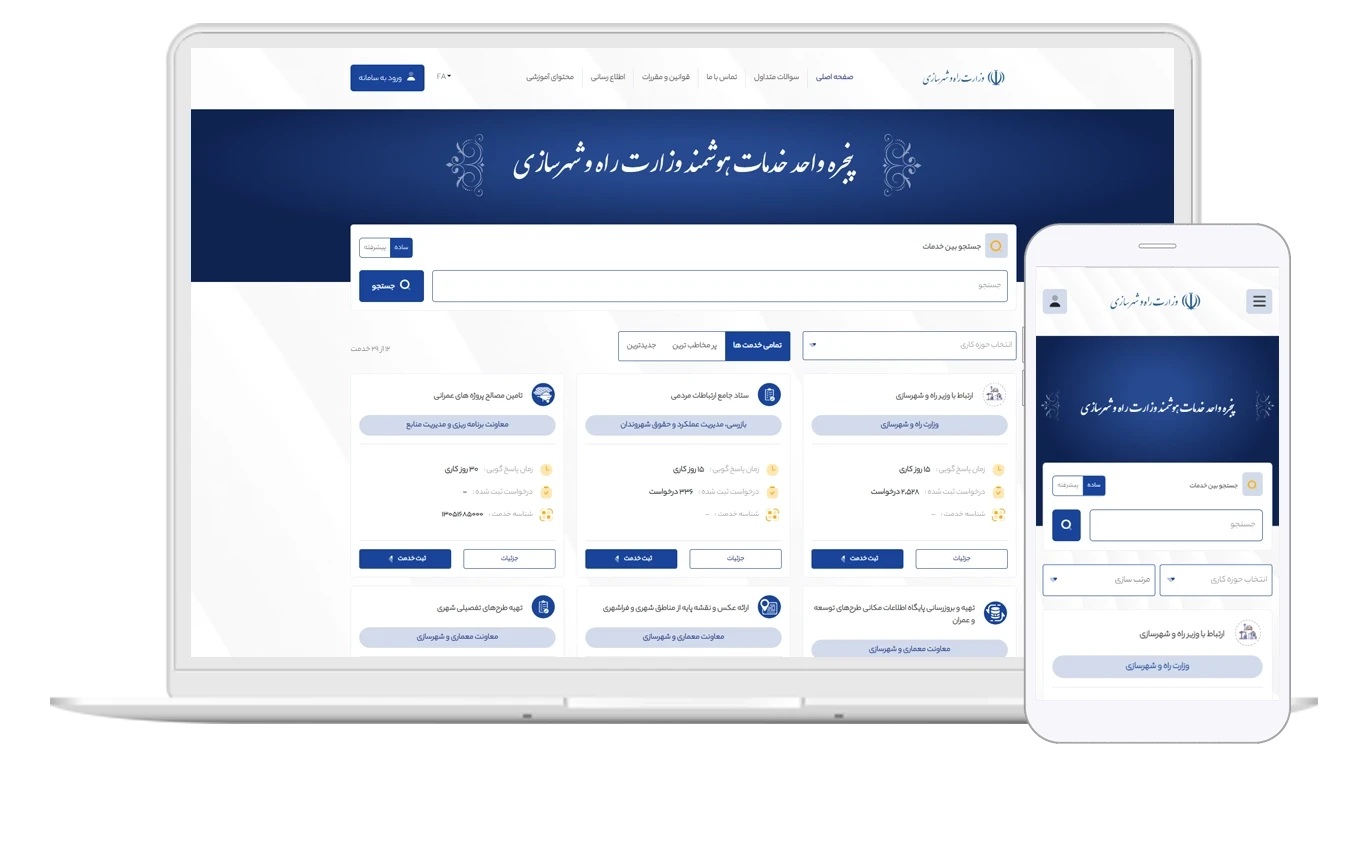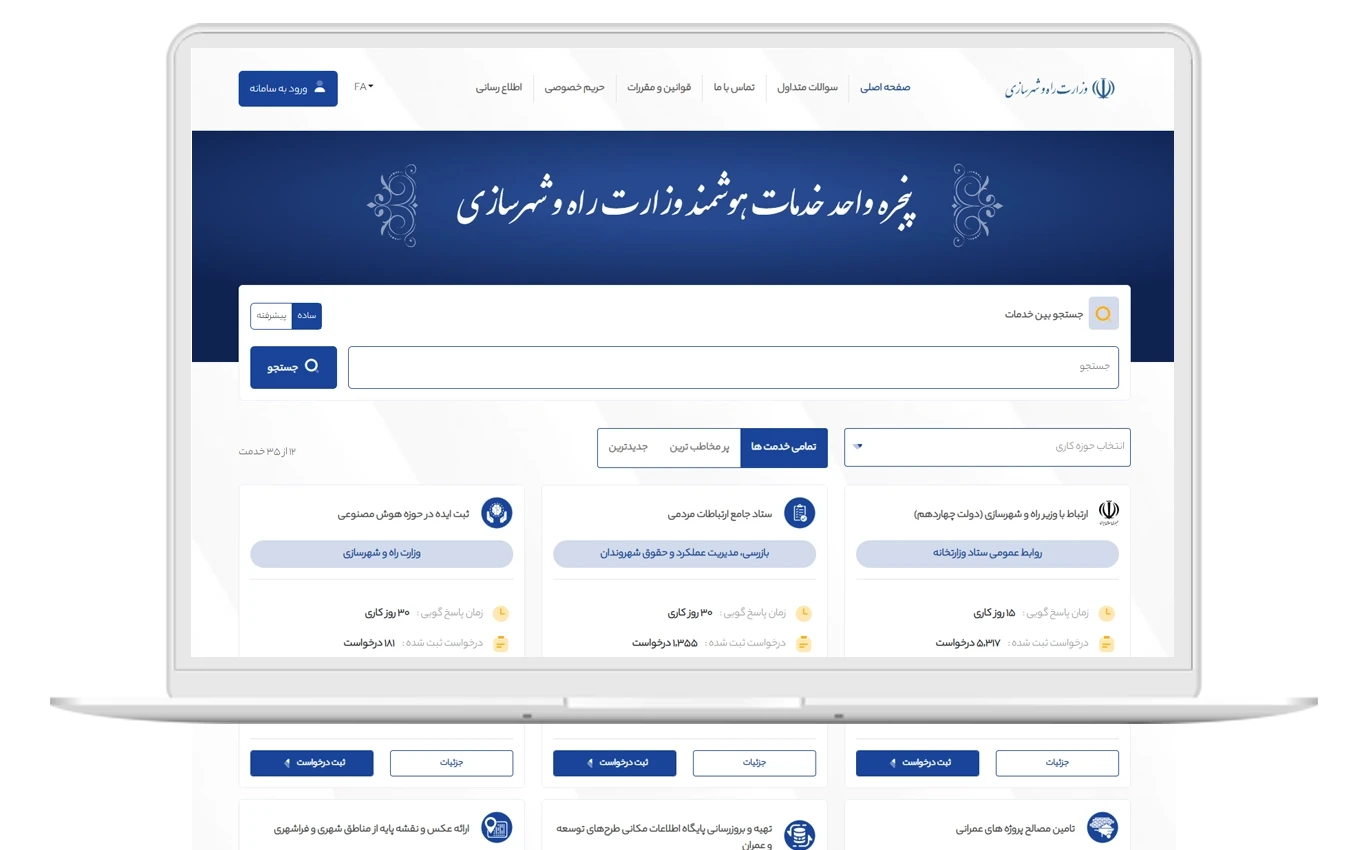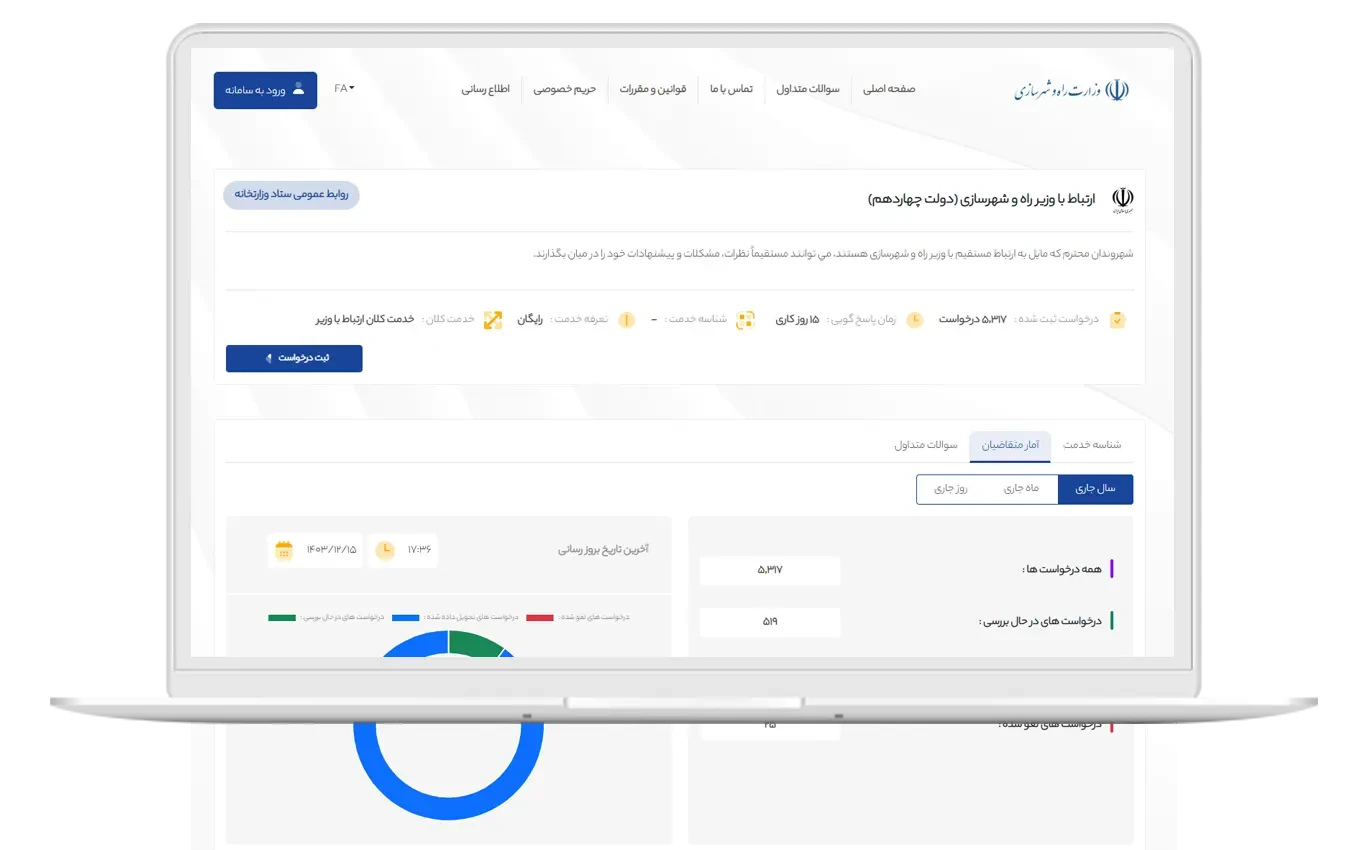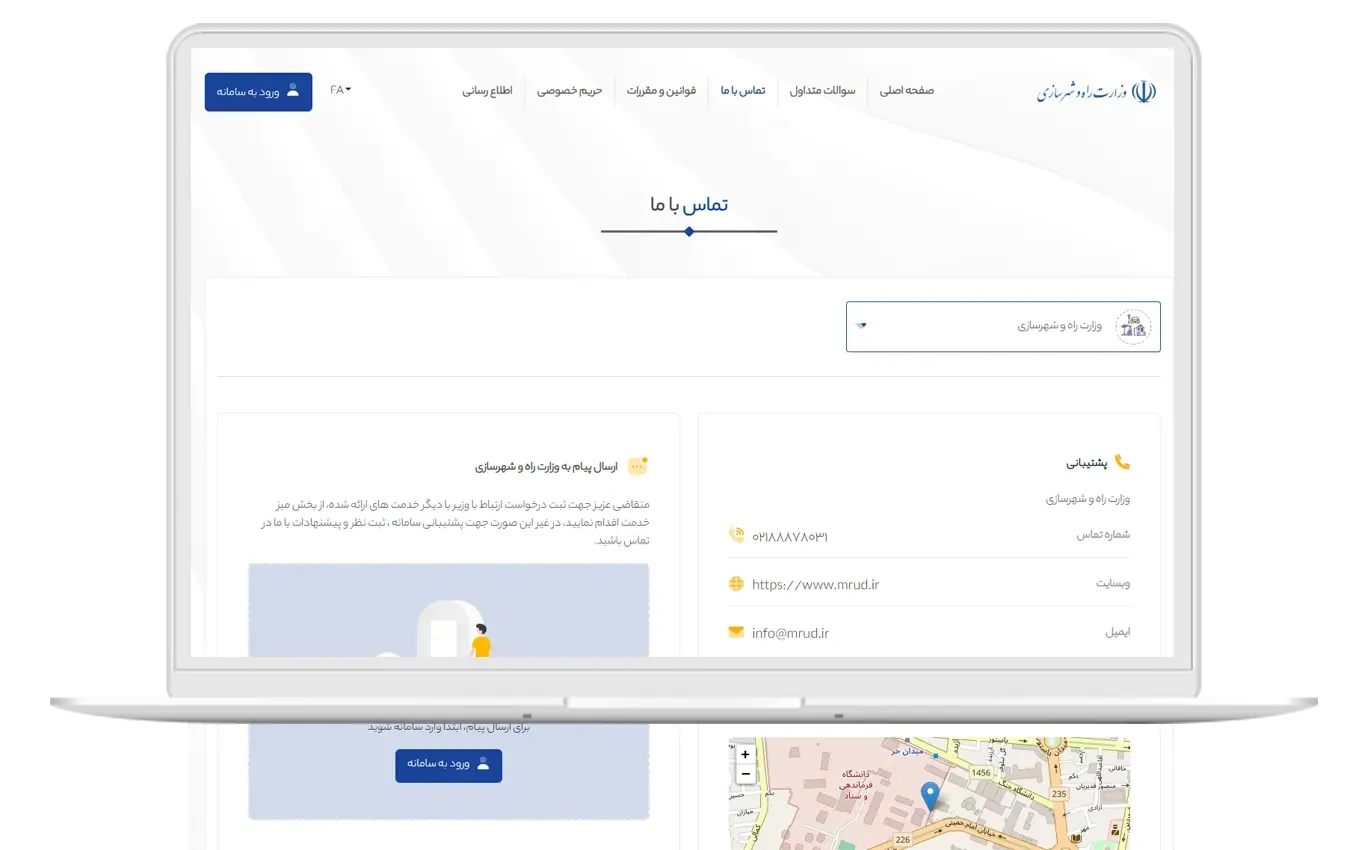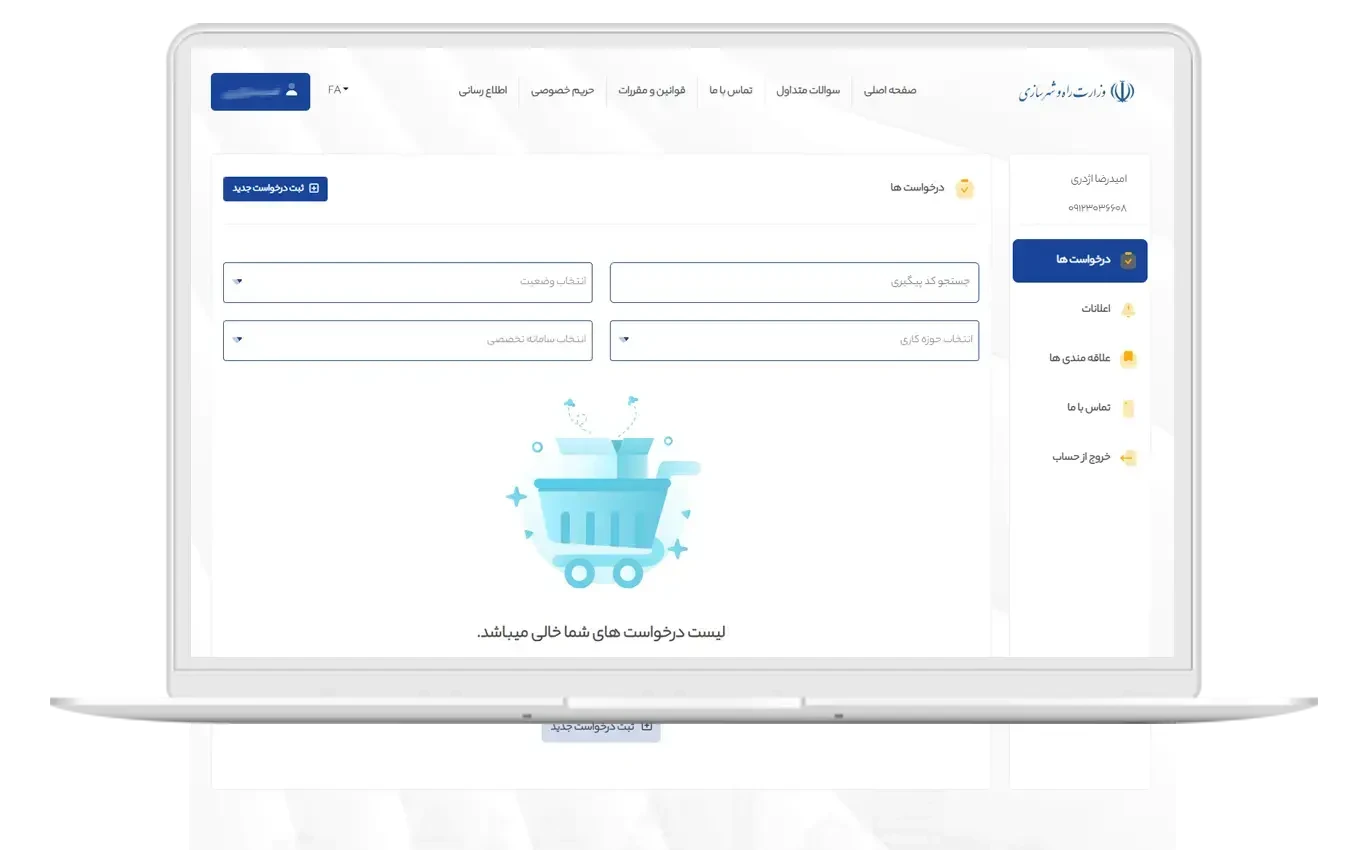Introduction to Business Process Management (BPM) and Its Importance in E-Government
Business Process Management (BPM) is a strategic approach to designing, executing, and monitoring organizational processes that help governments provide their services faster, more transparently, and more efficiently. In the era of digital transformation, government organizations can use BPMS software and BPMN tools to model and optimize processes, creating a new experience for citizens.
Introduction to the Smart One-Stop Shop Project of the Ministry of Roads and Urban Development
The Smart One-Stop Shop Project of the Ministry of Roads and Urban Development is one of the significant steps towards e-government in Iran. This project was designed and implemented with the aim of consolidating services in the fields of roads, housing, and urban development into a single platform, utilizing Dynamic BPMS technology.
Challenges Before Project Implementation
- Multiple systems and lack of coordination among various units
- Complex bureaucracy and time-consuming service delivery
- Lack of integrated access for users to diverse services
- Insufficient transparency in tracking requests
Key Objectives of the Project
- Creating an integrated platform for electronic services
- Reducing service delivery time and increasing citizen satisfaction
- Organizational automation and elimination of redundant activities
- Continuous monitoring and improvement of processes (CPI)
The Role of BPMS Software in Project Implementation
The use of BPMS software was essential to manage this large-scale project. This software enabled the design of processes, their automated execution, and real-time performance monitoring.
Using BPMN Tools for Process Modeling
With the help of BPMN tools, the project team was able to model the complex processes of the Ministry of Roads and Urban Development in a simple and understandable way. This modeling laid the groundwork for standardization and reduction of errors.
Organizational Automation and Reducing Bureaucracy
The automation of processes with the help of BPMS led to the elimination of many repetitive activities, considerably reducing the response time for requests.
Project Achievements in Digital Transformation
Optimizing Processes and Increasing Service Delivery Speed
By redesigning and optimizing processes, the average service delivery time was reduced, and user satisfaction significantly increased.
Monitoring Business Processes and Analyzing Process Data
The new system provided the capability to monitor business processes and analyze data. This feature allowed managers to make faster and smarter decisions.
Continuous Process Improvement (CPI) in the System
The project was designed with a focus on Continuous Process Improvement (CPI) to ensure that processes become more efficient over time.
Impact of the Project on Organizational Agility of the Ministry of Roads and Urban Development
One of the most important results of this project was the increase in the organizational agility of the Ministry of Roads and Urban Development. This organization is now able to respond faster to environmental changes and the needs of citizens.
User Experience and Client Satisfaction
Users can access the services they need without in-person visits by entering the smart one-stop shop. This not only saves time but also increases public trust in government services.
Lessons Learned and Recommendations for Other Organizations
- Investing in process design before starting implementation is essential.
- Accurate modeling with BPMN is the foundation of project success.
- Monitoring and analyzing process data is the key to continuous improvement.
- Every digital transformation project requires interdepartmental collaboration and employee training.
Conclusion
The Smart One-Stop Shop Project of the Ministry of Roads and Urban Development is a successful example of applying Business Process Management (BPM) in e-government. This project demonstrated that by using BPMS, BPMN tools, and a continuous process improvement approach, the path of digital transformation can be paved in government organizations.
Frequently Asked Questions (FAQ)
1. What is Business Process Management (BPM)?
BPM is an approach for designing, executing, and monitoring organizational processes that helps improve performance and increase productivity.
2. What is the difference between BPM and BPMS?
BPM is a management approach, while BPMS is software for implementing and executing that approach.
3. Why is BPMN important in projects?
BPMN is a standard language for modeling processes that simplifies communication between teams and understanding of processes.
4. What role did CPI play in this project?
Continuous Process Improvement (CPI) ensured that the system was always evolving and upgrading, adjusting processes according to new needs.
5. How did this project contribute to digital transformation?
By integrating services and eliminating bureaucracy, the project was able to create a faster, clearer, and more efficient experience for citizens.
6. Is this experience repeatable in other organizations?
Yes, other organizations can also implement similar projects by investing in BPM and BPMS.
